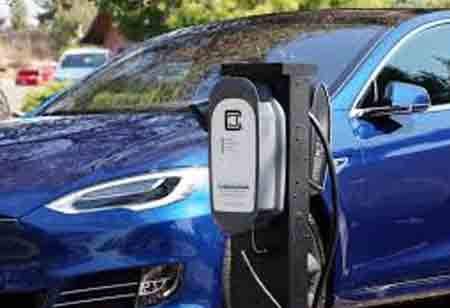THANK YOU FOR SUBSCRIBING
THANK YOU FOR SUBSCRIBING
Be first to read the latest tech news, Industry Leader's Insights, and CIO interviews of medium and large enterprises exclusively from Auto Tech Outlook

By
Auto Tech Outlook | Friday, June 18, 2021
Stay ahead of the industry with exclusive feature stories on the top companies, expert insights and the latest news delivered straight to your inbox. Subscribe today.
Efficient drivetrains using semiconductor technologies such as Silicon Carbide (SiC) enable engineers to meet high voltage and power demands cost-effectively.
FREMONT, CA: At a more accessible price point, consumer demand for electric vehicles (EVs) with a range comparable to internal combustion engines currently outstrips technology itself. More efficient drivetrains, using semiconductor technologies like Silicon Carbide (SiC), enable engineers to achieve cost-effectively high voltage and power demands. As a result, some EV applications use SiC technology. These are primarily for low-power applications like battery chargers, auxiliary DC-DC converters, and solid-state circuit breakers. However, drivetrain power designers are reluctant to use this technology, preferring to wait for an acceptably low ON-resistance, improved robustness, and more accessibility. Now, a performance breakthrough addresses all those concerns—the latest SiC-FET generation of the US, or 'stacked cascode.'
Stacked cascode
A stacked cascode consists of two transistors mounted on top of each other: a high-voltage SiC JFET is connected to an optimised low-voltage Si-MOSFET. MOSFET shorts JFET gate-source up, turning it ON. MOSFET drain voltage rises at the low entrance, but only when the JFET closes at 10V. The result is an OFF-device easy drive. It also has all the advantages of a low-resistance, high-voltage, high-temperature operation SiC device and an integral body diode effect with excellent reverse recovery features. Cascode idea has been around for a while now, but JFET versions now achieve ON-resistance at high voltage ratings, labeling them close to the "ideal" switch.
SiC-FET also has short-circuited robustness. High channel resistance current produces a negative JFET gate bias that tends to disconnect the device. In addition, the channel's positive temperature coefficient further reduces short-circuit current through self-heating. This effect accessible to parallel SiC-FETs with automatic current balancing, further assisted by the relatively insensitive characteristics of stacked MOSFET threshold voltage and reverse temperature recovery.
In fast-charger applications, SiC-FETs are ideal. They offer peak efficiency in PFC's front ends and the main stage of DC-DC conversion—both typically using a phase-shifted full-bridge or LLC topology. Due to their low drop and lack of reverse recovery losses, SiC diodes are already used in high-voltage chargers to implement output rectification. This is because Si-MOSFET synchronous rectification (SR) is complex at high voltage and can save no diode losses. However, using SiC-FETS with low RDS(ON) may be better.
Check Out This : Semiconductor Review
Compatibility backward
As UnitedSiC SiC-FETs are available in three- and four-lead TO-247 packages, they can replace many IGBTs and Si-MOSFETs in motor drives. This gives a significant efficiency boost with little circuit change, apart from perhaps gate drive resistors and small snubbers to tailor the switching edges. Moreover, with UnitedSiC's latest generation of low-RDS(ON) devices, SiC-FETs pave the way for the EV drivetrain revolution.
See Also:
 Copyright © 2025 AutoTech Outlook. All Rights Reserved | Privacy Policy | Subscribe | Sitemap | About us | Feedback Policy | Editorial Policy
Copyright © 2025 AutoTech Outlook. All Rights Reserved | Privacy Policy | Subscribe | Sitemap | About us | Feedback Policy | Editorial Policy 



